Pearl Harbor & the Bishop Museum – War and Peace in Hawaiii
This is one of a series of posts I did during and after a visit to all four of the main Hawaiian islands a few years ago. It has been updated for accuracy as of 2021. In the last post Alison and I arrived back in Honolulu after a week in Kauai and I described how to land a decent vacation rental in Waikiki for a reasonable price. In this post we’ll visit Pearl Harbor and the Bishop Museum. Please join us.
In preparation for a trip to any new destination I try to read as much about the history of the area as I can well as any novels that might give me a better insight into the psyche of people. In the case of Hawaii these included James Jones’ epic novel From Here to Eternity which provided a graphic description of the attack on Pearl Harbor and the Schofield Barracks and helped develop an understanding of the huge role that the American military plays in Hawaii’s everyday life. Julia Siler’s Lost Kingdom provided a history of the Hawaiian islands with particular emphasis on the 19th century and the disgraceful manner in which the US annexed the islands to placate the demands of sugar barons and other piratical sorts whose sole interest was the exploitation of the islands and its inhabitants. Both of these books provided invaluable preparation for today’s planned expeditions – Pearl Harbor and the Bishop Museum.
Pearl Harbor
I’m dating myself to say that I had visited Pearl Harbor some thirty years ago and remembered it as a moving experience, but one somewhat marred by the absolute throngs of visitors. In my experience the best way to beat the crowds is to be there at the opening bell – bus tours usually don’t start arriving until about an hour after the official opening time. With that thought in mind I reserved tickets, which you can do online for the 8:00 AM tour, the first that leaves for the USS Arizona monument each day. You can also reserve an audio tour which I highly recommend. The park itself opens at 7:00 AM which gives enough time to visit the new Pearl Harbor Visitor Center, which is composed of a number of buildings, including the USS Bowfin Submarine Museum which has recently been expanded to become the Pacific Fleet Submarine Museum. It is completely separate from the other attractions at Pearl Harbor and has a $20.00 admission fee that includes an audio tour.
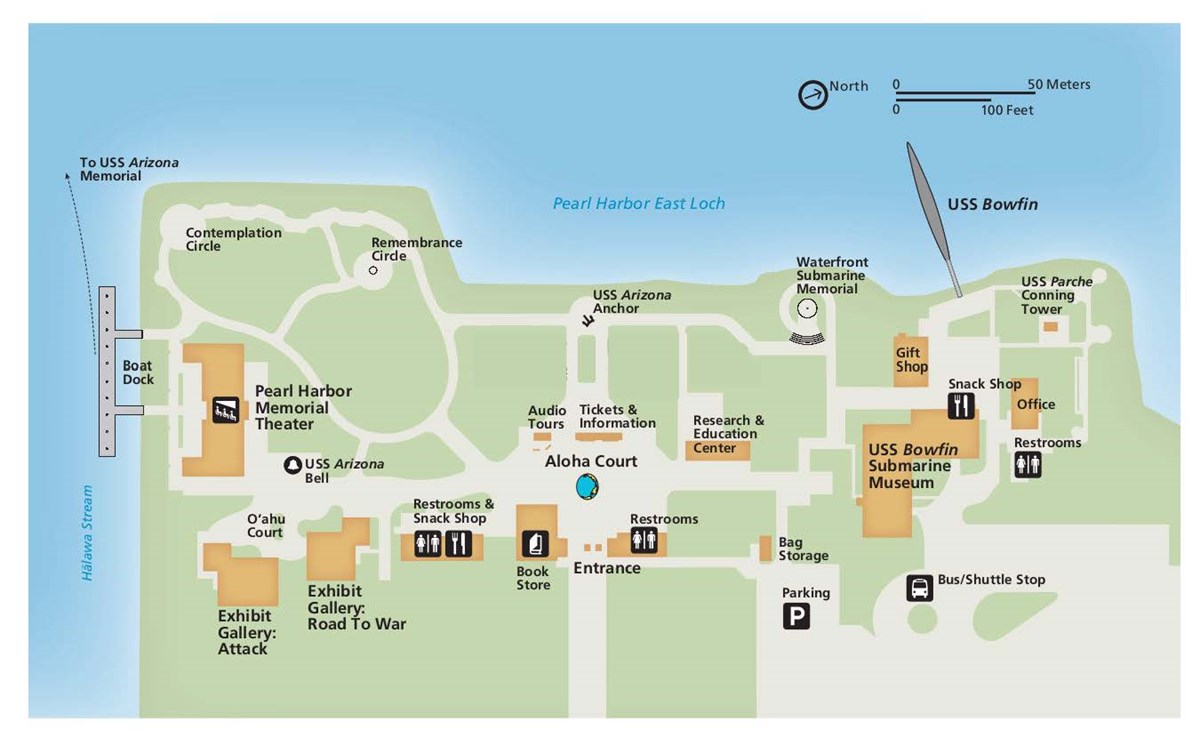
There are two free museums that should be visited prior to taking the short boat ride to the Arizona monument. One of the museums, The Road to War tells the global picture of the lead up to WWII and the other, Attack, focuses on the events of December 7, 1941.
By coincidence our visit to Pearl Harbor was scheduled for a Sunday morning, the same day and close to the time that the actual attack occurred. We got up early and drove the eleven miles to Pearl Harbor on a, for once, unclogged freeway. The skies were threatening rain, but because we were early we were able to park reasonably close to the entrance. There is no charge for parking. Security at Pearl Harbor is understandably intense. Although you don’t need to go through any screening, that is because anything that could be concealed as a weapon is banned – that includes purses, backpacks and camera bags. The only thing we took were cameras and umbrellas.
We picked up our tickets and audio headsets just as an absolute deluge opened up and we imitated Donovan Bailey in sprinting to the museums. The entire Pearl Harbor complex was completed changed since my first visit – neither of these museums existed. To me they are essential in getting an understanding of why the Japanese did what they did and why the attack was so successful – really an unbelievable risk which paid off mostly because of lack of preparedness and incompetence on the American side. The museums don’t try to sugarcoat or gloss over the American failures, but certainly put to rest the fantasies of conspiracy theorists that President Roosevelt knew about the impending attack and let it happen so the US could get into the war.
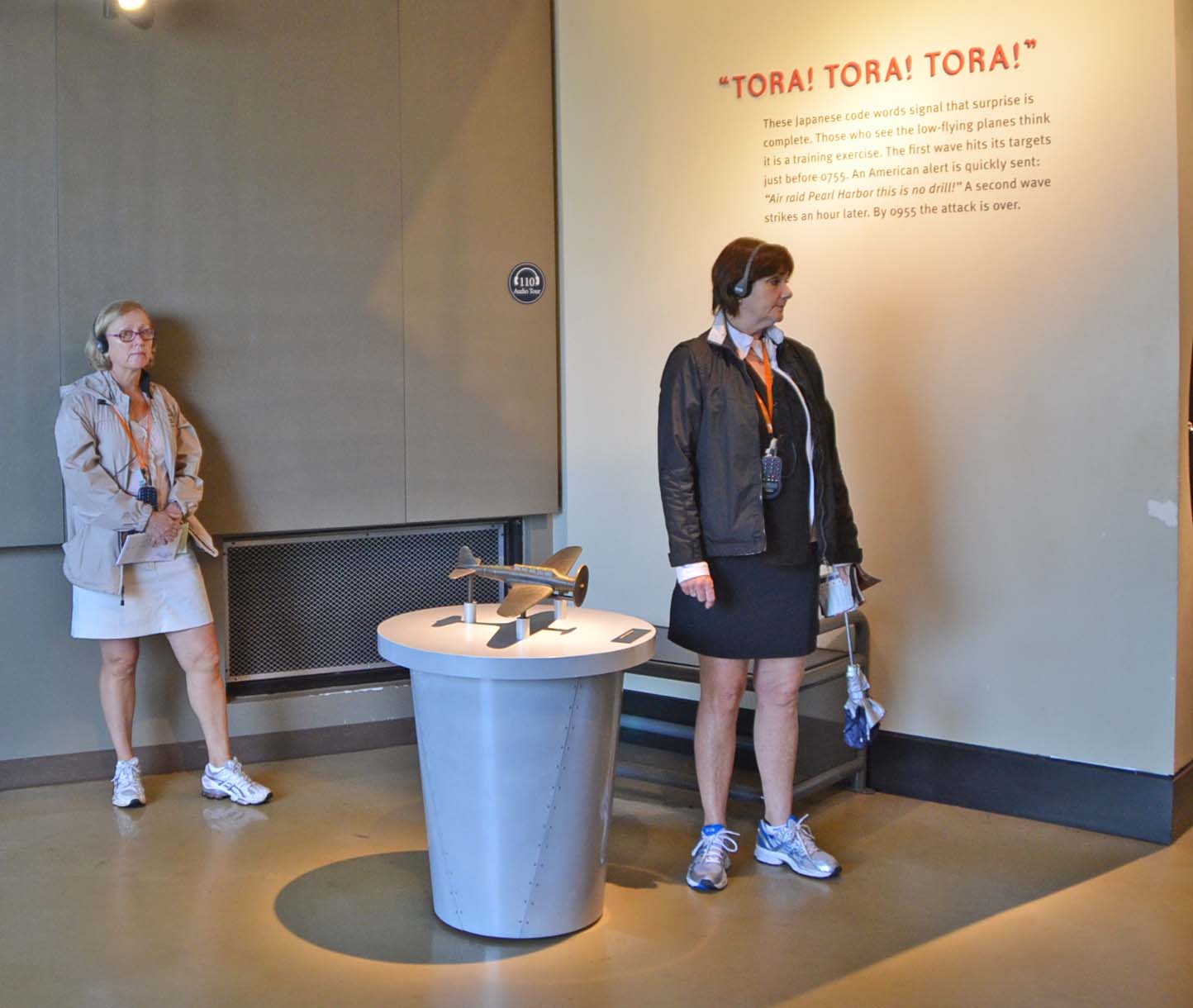
The audio tour was invaluable in providing all the information necessary in order to prepare for a visit to the USS Arizona monument. It also had the beneficial side affect of drowning out the constant jabber of countless young Asian tourists who seemed oblivious to the fact that WWII was the single most destructive conflict in the history of mankind and really not a laughing matter.
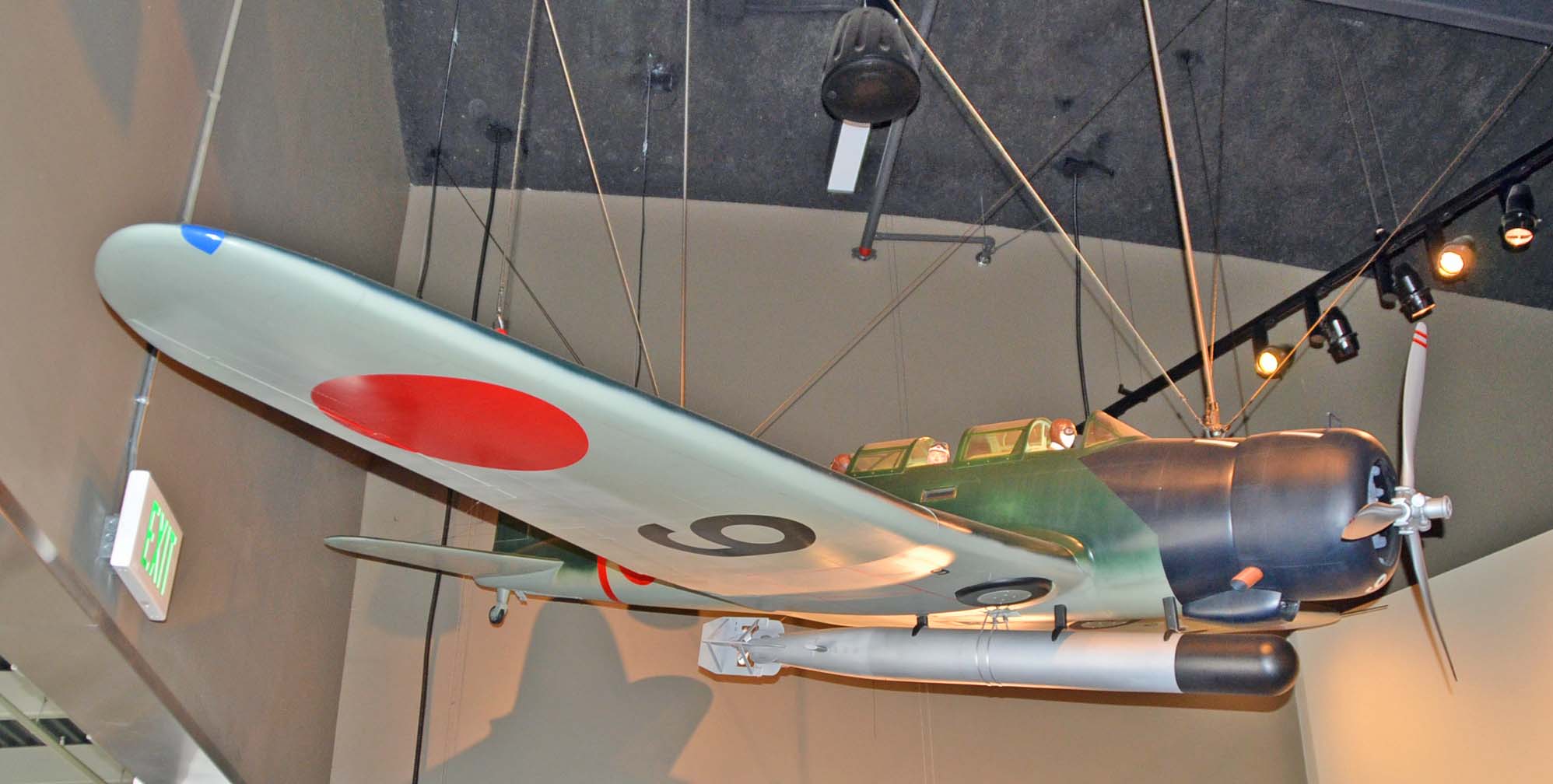
We could easily have spent more than an hour at the museums, but we were required to be at the staging post for the boat to the Arizona by 7:45. Although the Arizona monument is run by the National Park Service the shuttle to the monument is run by the US Navy and not surprisingly things are done with military precision. After watching a short film on the attack we were escorted onto a small ferry that takes about 200 people to the monument for a stay of about twenty minutes. While the rain had let up there was a steady drizzle which contributed to the somber ambiance of a visit to a place where 1,177 men lost their lives, many of whom remain entombed in the Arizona’s wreckage.
Simply being on the water at Pearl Harbor is an awesome experience. Travelling along Battleship Row there are monuments to identify where other ships that were also attacked that day were moored. Although the boat trip is only about ten minutes it permits a chance to see and photograph the legendary USS Missouri which is permanently moored nearby as is the submarine USS Bowfin. My biggest regret is that we didn’t have time to visit these other vessels, particularly the Missouri as it provided the bookend to the American participation in WWII. It started with the sinking of the Arizona and ended with the Japanese surrender on the deck of the Missouri.
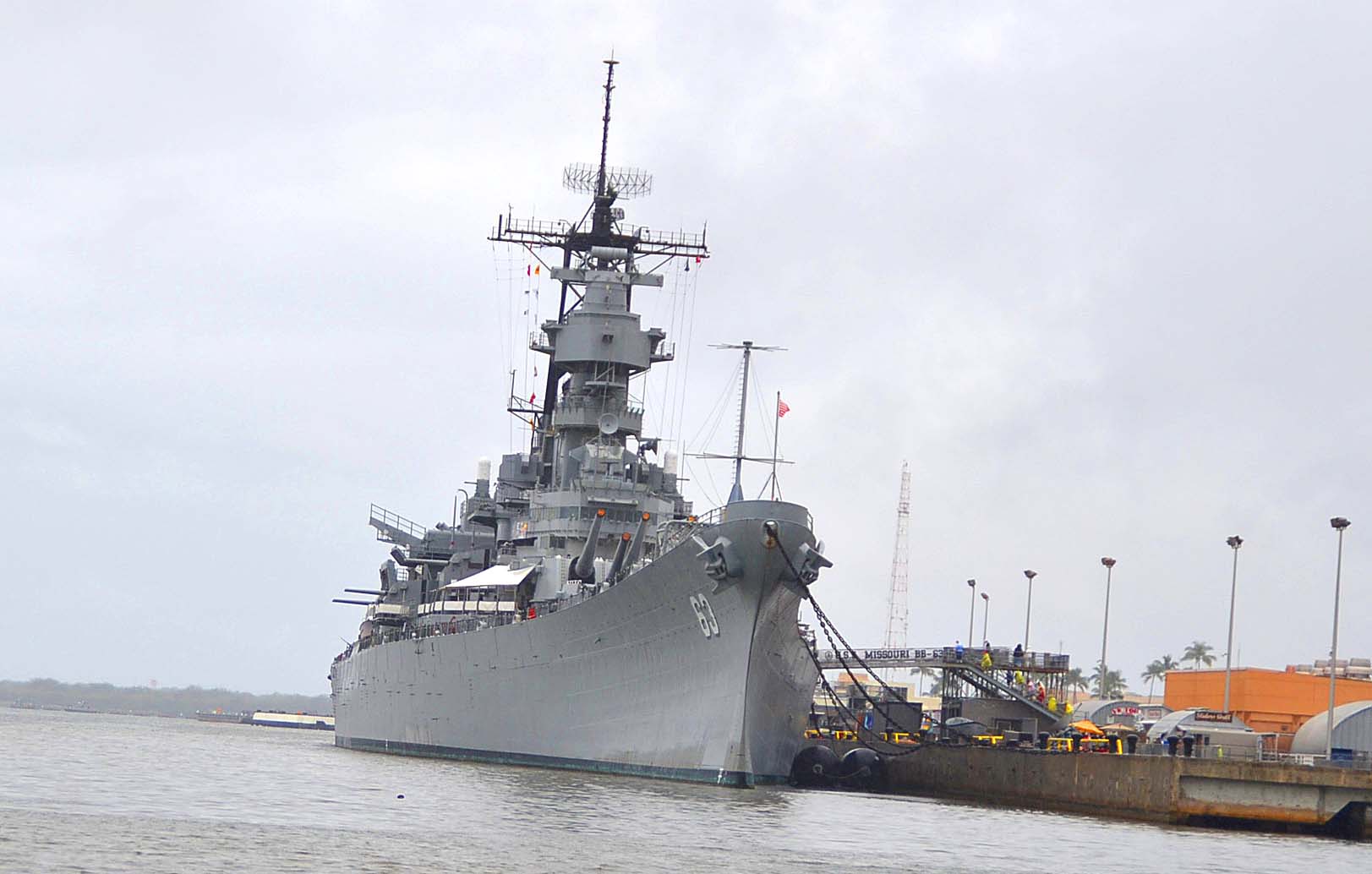
As we approached the iconic USS Arizona monument which straddles the sunken corpse of the ill fated ship it brought to mind the countless movies, photos and books that portrayed that ‘day that will live in infamy’ as FDR so famously called the attack on Pearl Harbor. The one that kept coming to mind was the famous photo of the sinking ship billowing smoke.
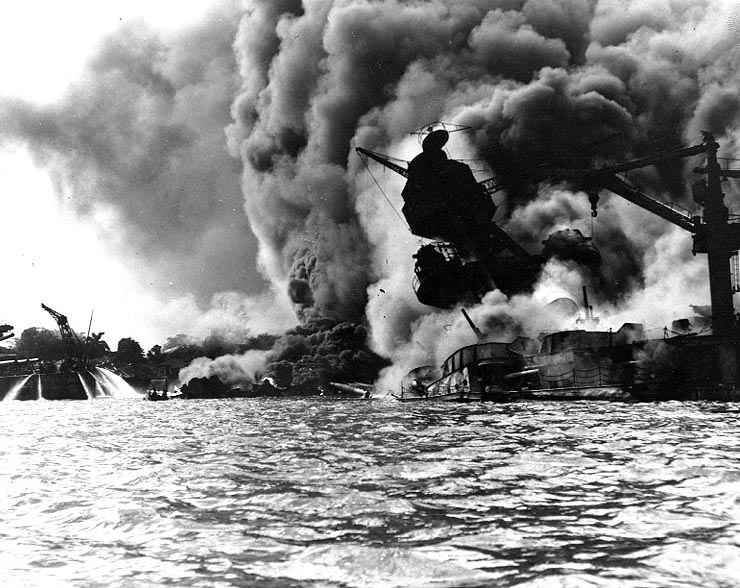
Even though you are required to remain seated during the ferry ride, if you get a seat next to the railing it is possible to get good shots as you approach.
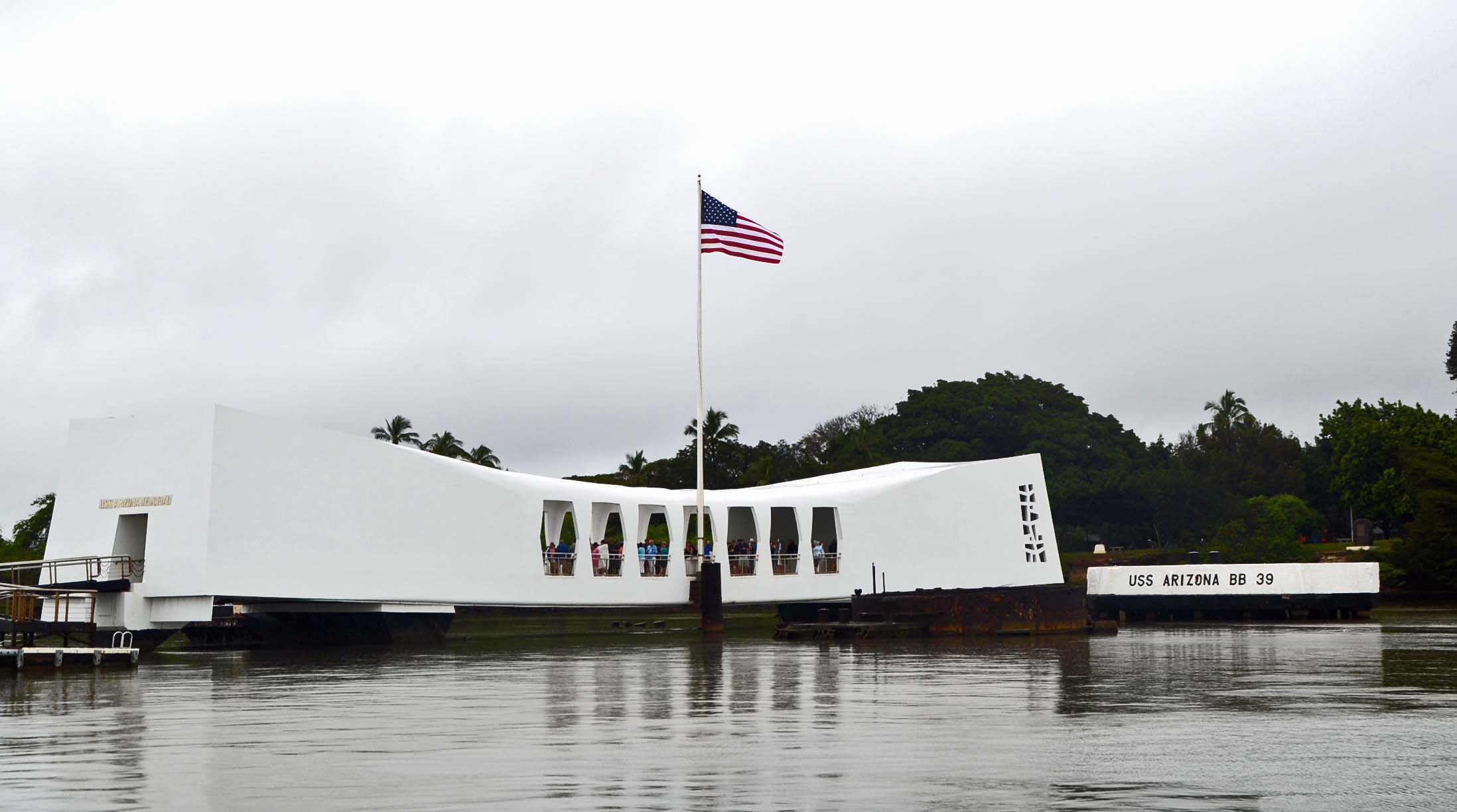
Once off loaded the best thing to do is go immediately to the front of the monument where the entire wall contains the Roll of Honor with the names of all those who perished during the attack and those shipmates who survived and died at a later date. If you don’t, chances are that within minutes it will be swarmed by your fellow shipmates and you won’t get a chance to get an unobstructed view as below.
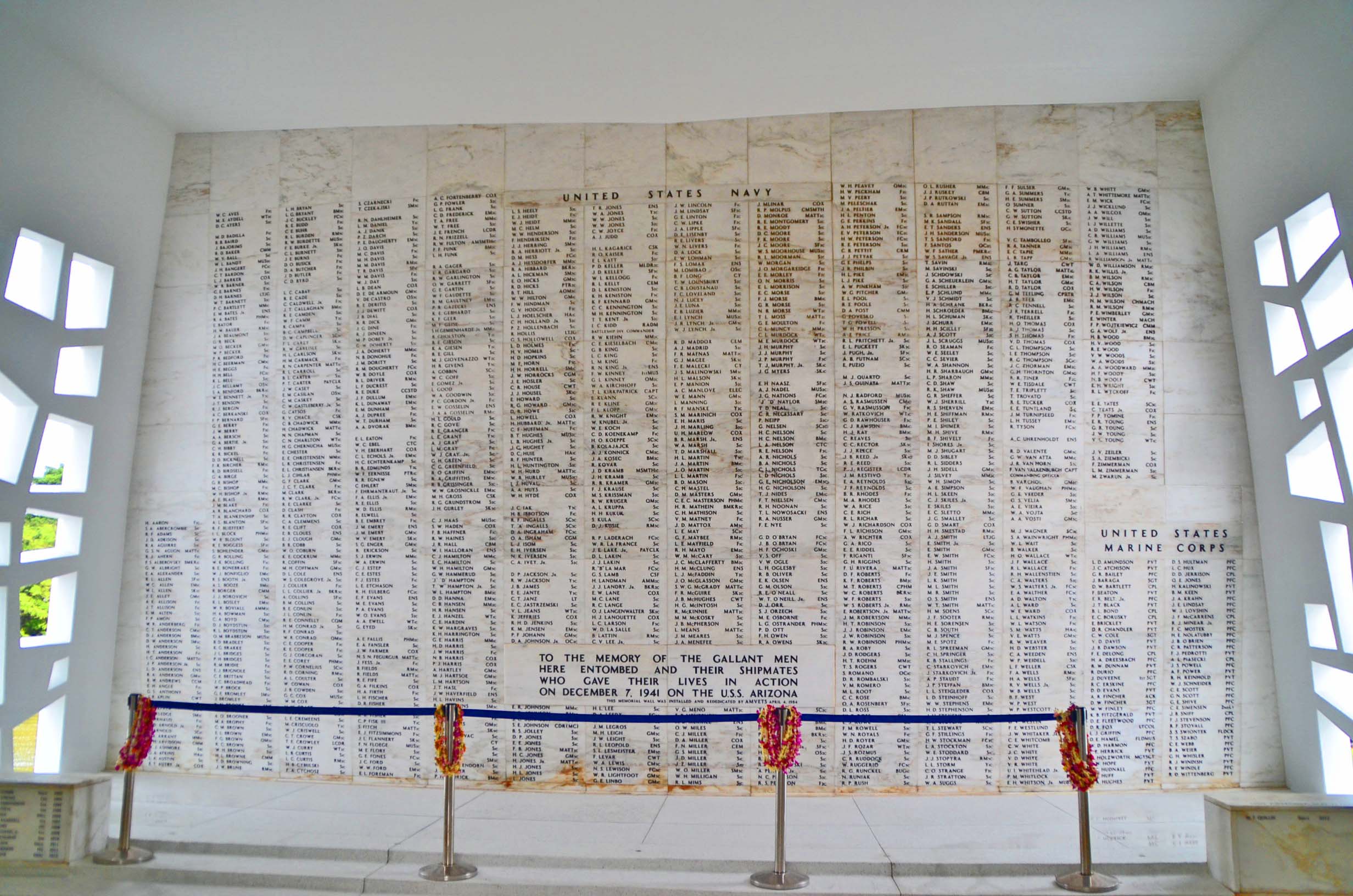
Once you are finished at the Roll of Honor there is plenty of time to listen to the audio tour description of the monument before reembarking for shore. On the return trip we had a clear view of what we were candidly told by one of the crewmen was a top secret surveillance thingy he called the ‘golf ball’. The picture shows it was an apt description.
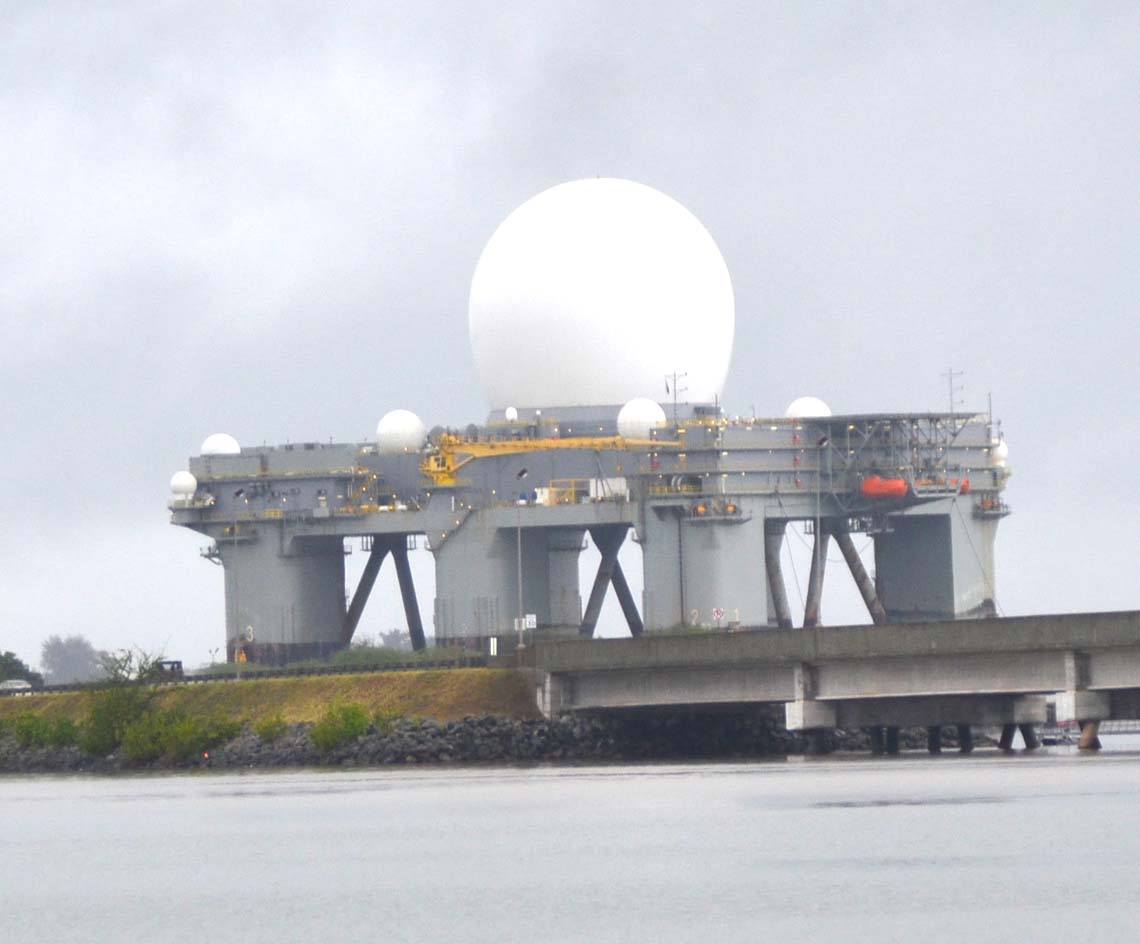
It was interesting because a month later we read that it had been deployed to the South China Sea in the midst of yet another case of North Korean saber rattling.
Back on shore we visited some more stops on the audio tour before being driven into the museum store by an unrelenting rain. The store has every possible thing one could imagine related to Pearl Harbor and its aftermath – books, pictures, posters, puzzles, models, clothes and the best collection of fridge magnets dedicated to one event I have ever had the privilege to see. Limiting myself to only a couple was an act of great self restraint. Regardless of the weather, a visit to Pearl Harbor will create live long memories that will be bittersweet at best and gut wrenching at worst.
The Bishop Museum
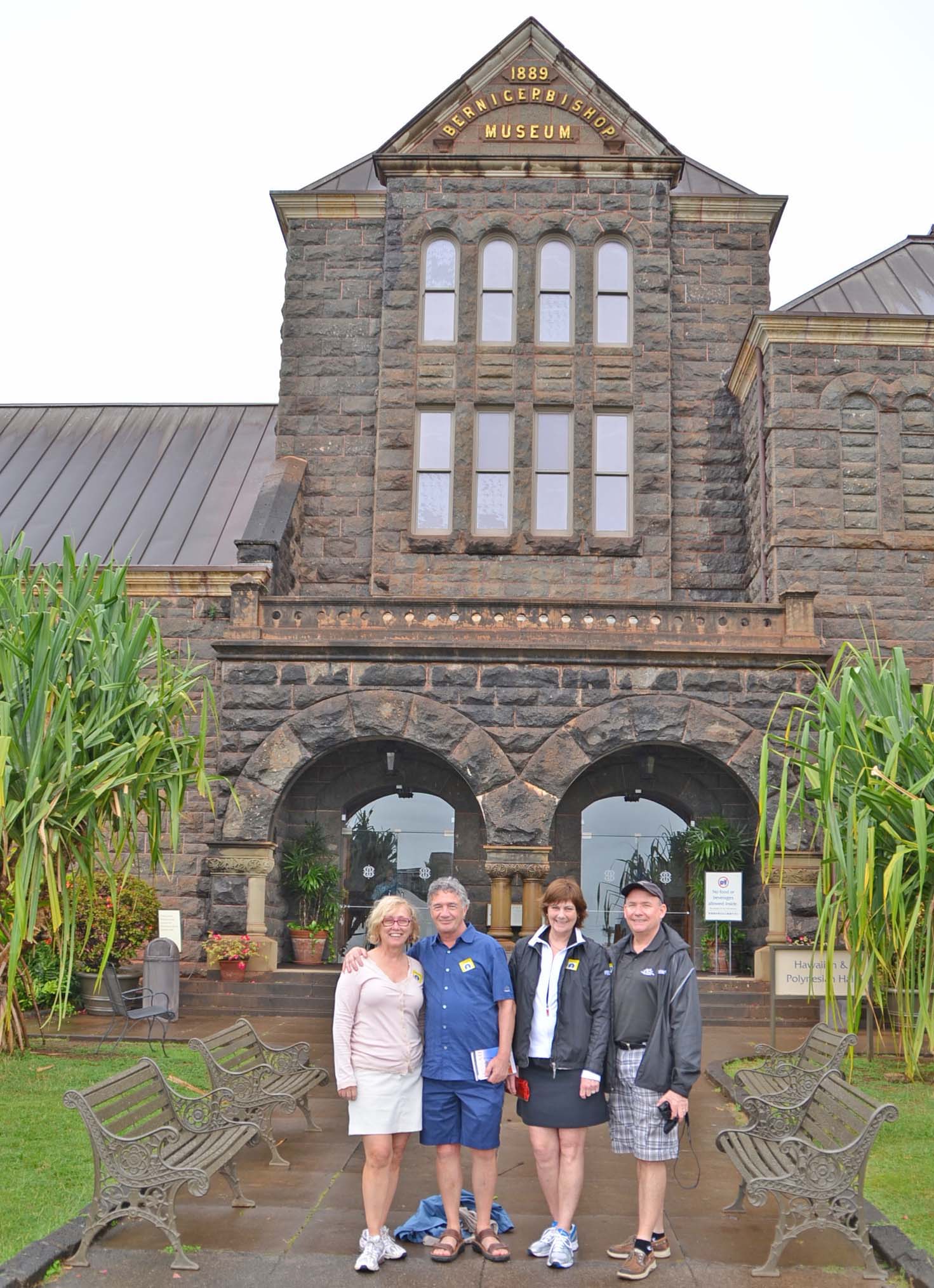
Given that the rain was not letting up we decided to make our next stop the Bishop Museum, the place to learn about the history of Hawaii and its people. The museum was founded by Bernice Pauahi Bishop, a Hawaiian princess and last direct descendent of the legendary King Kamehameha, of whom much more will be written. Against the wishes of her family she married an American businessman and between them they built up a huge fortune in land and businesses that have provided an ongoing legacy to the people of Hawaii, of which the museum is only a small part. The museum itself has a number of components, but my interest was primarily in the massive Hawaiian Hall, a three story wooden atrium surrounded by galleries that tell the story of the Hawaiian people in chronological order. It is the focal point of the original museum and a great place to get familiarized with Hawaiian customs, history and culture.
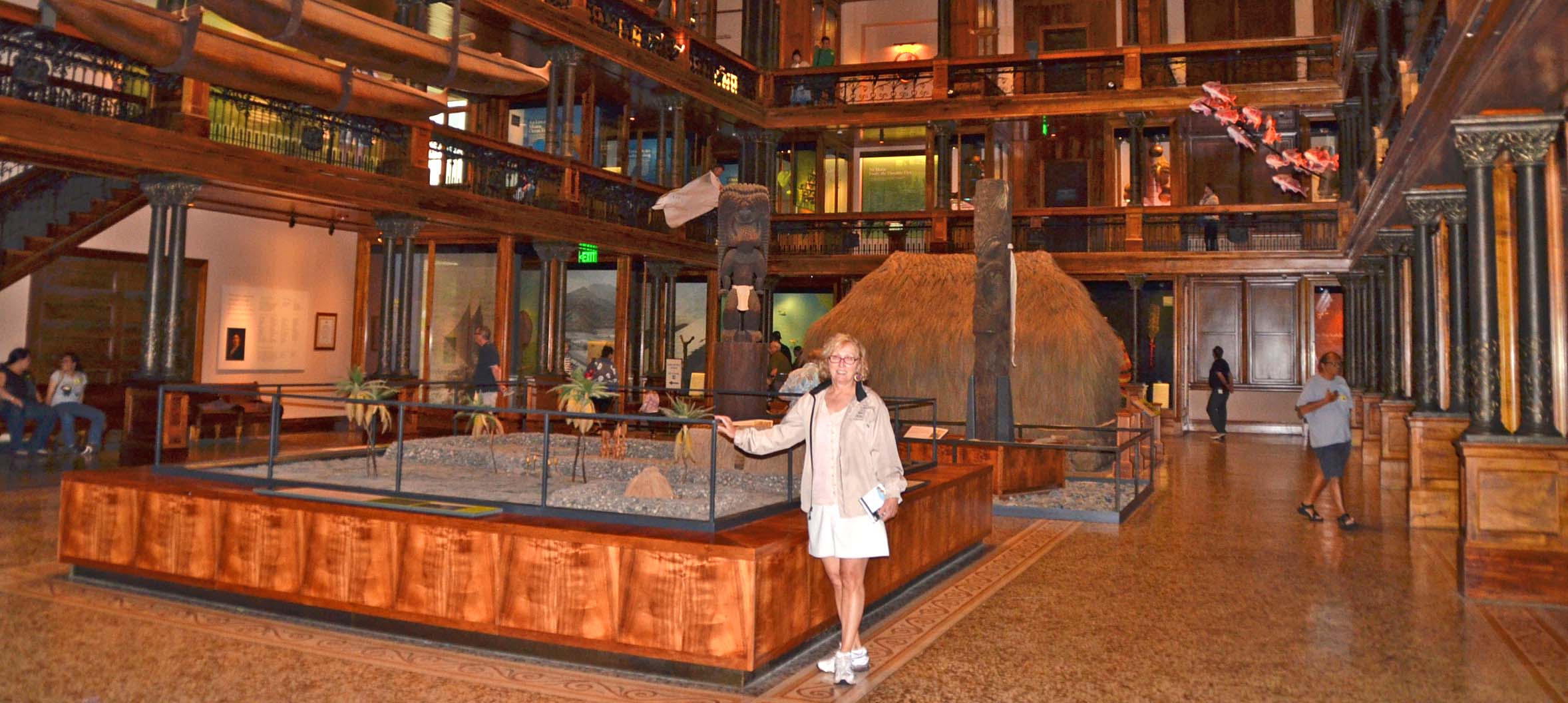
It was almost past one and before starting our tour we had lunch at the museum’s Cafe Pulama (now the Bishop Museum Cafe by Highway Inn) which has a very small menu and limited seating, but the food was good. Returning to the Hawaiian Hall we began with a tour by a docent of the most significant exhibits, followed by our own leisurely stroll through Hawaiian history.
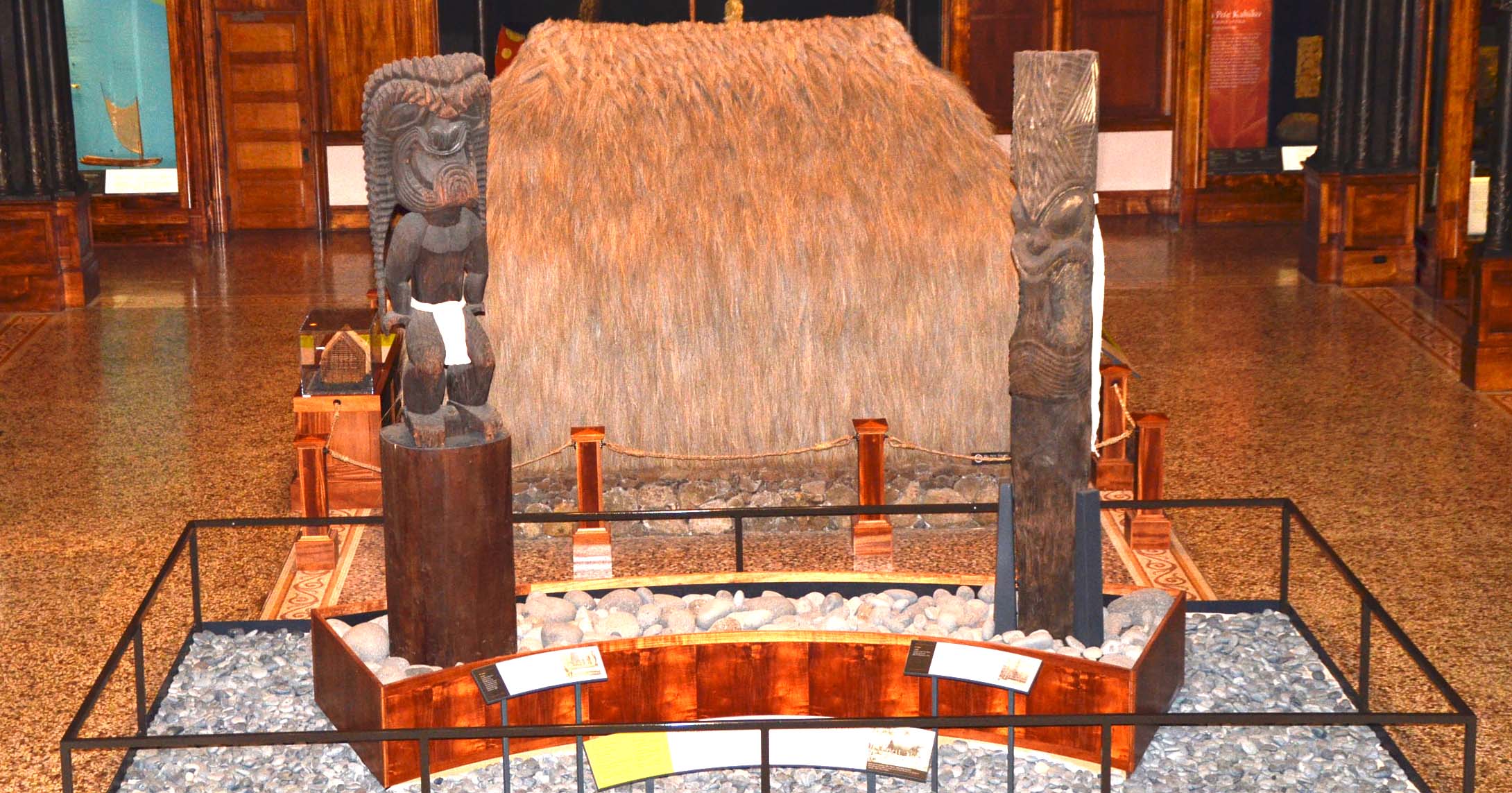
In keeping with today’s opening theme, we learned that the early history of Hawaii was bloody and cruel interspersed with internecine fueds and so many tabus that no one could keep up with keeping them. It was not until King Kamehameha the Great united Hawaii in 1810 that the Kingdom of Hawaii emerged. He did this by conquering Oahu and Maui from his original base on the Big Island in a series of bloody conflicts. The people of Kauai were wise enough to surrender without a fight which is why we had seen or heard little of Kamehameha during our visit to that island. Just by coincidence our journey through Hawaii would start at Kamehameha’s last conquest and end at its earliest on the Big Island.
The Hawaiian Hall contains some amazing exhibits, not the least of which are the ceremonial cloaks made from the feathers of the yellow mamo and red iiwi birds. Some of these apparently belonged to Kamehameha the Great.
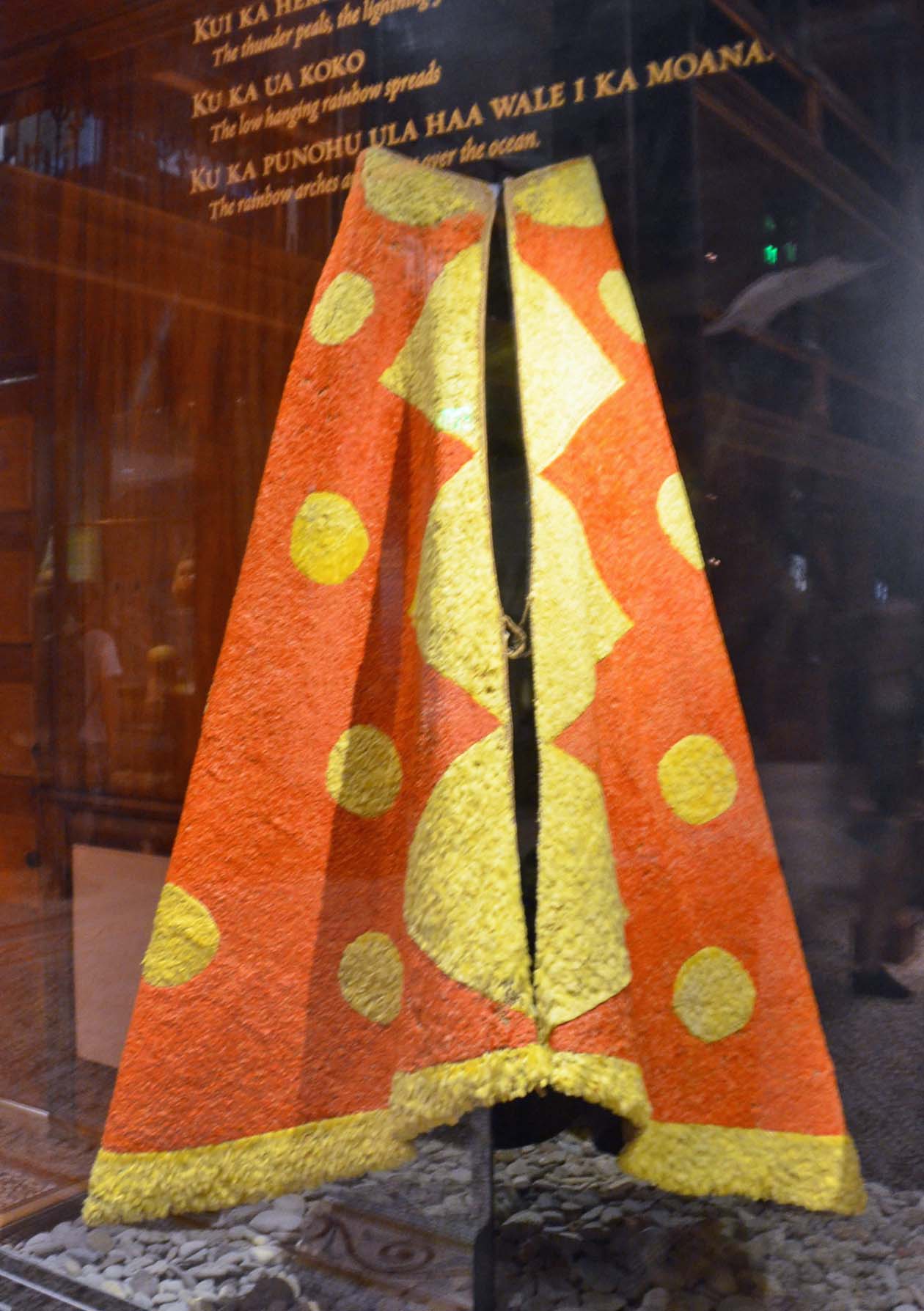
Also amazing and I am sure terrifying to those who originally beheld them were the images of the war God Ku, particularly this one. Check out this YouTube link for a better picture and description.
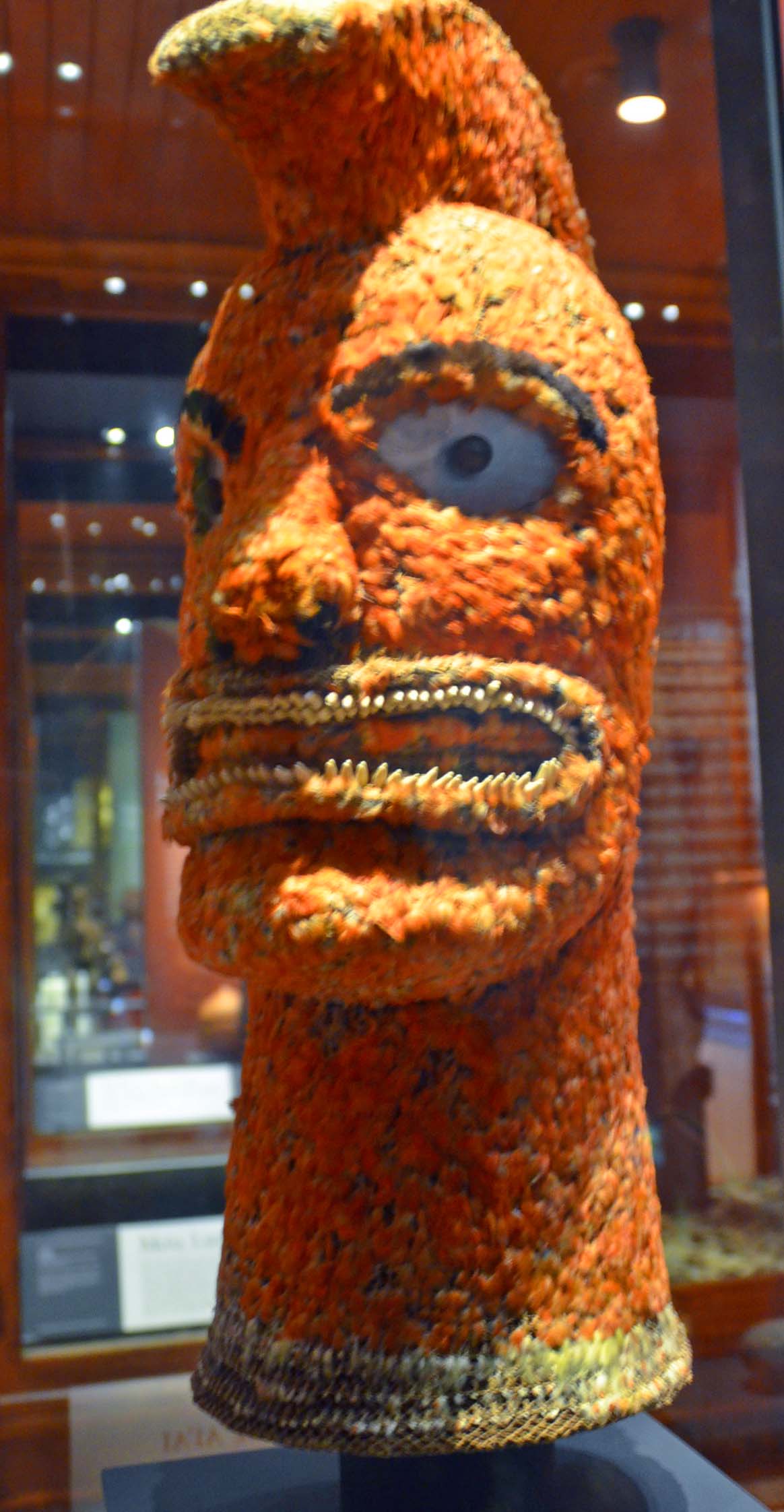
After spending about an hour in the Hawaiian Hall we spent less time in the natural history galleries and were about to leave when a docent suggested we stay to hear a traditional Hawaiian story teller who was going to start telling her tale shortly. I’m glad we did because the combination of the chanting and Hawaiian language did bring a sense of serenity and peace that was much needed after the day’s focus on war and bloodshed.
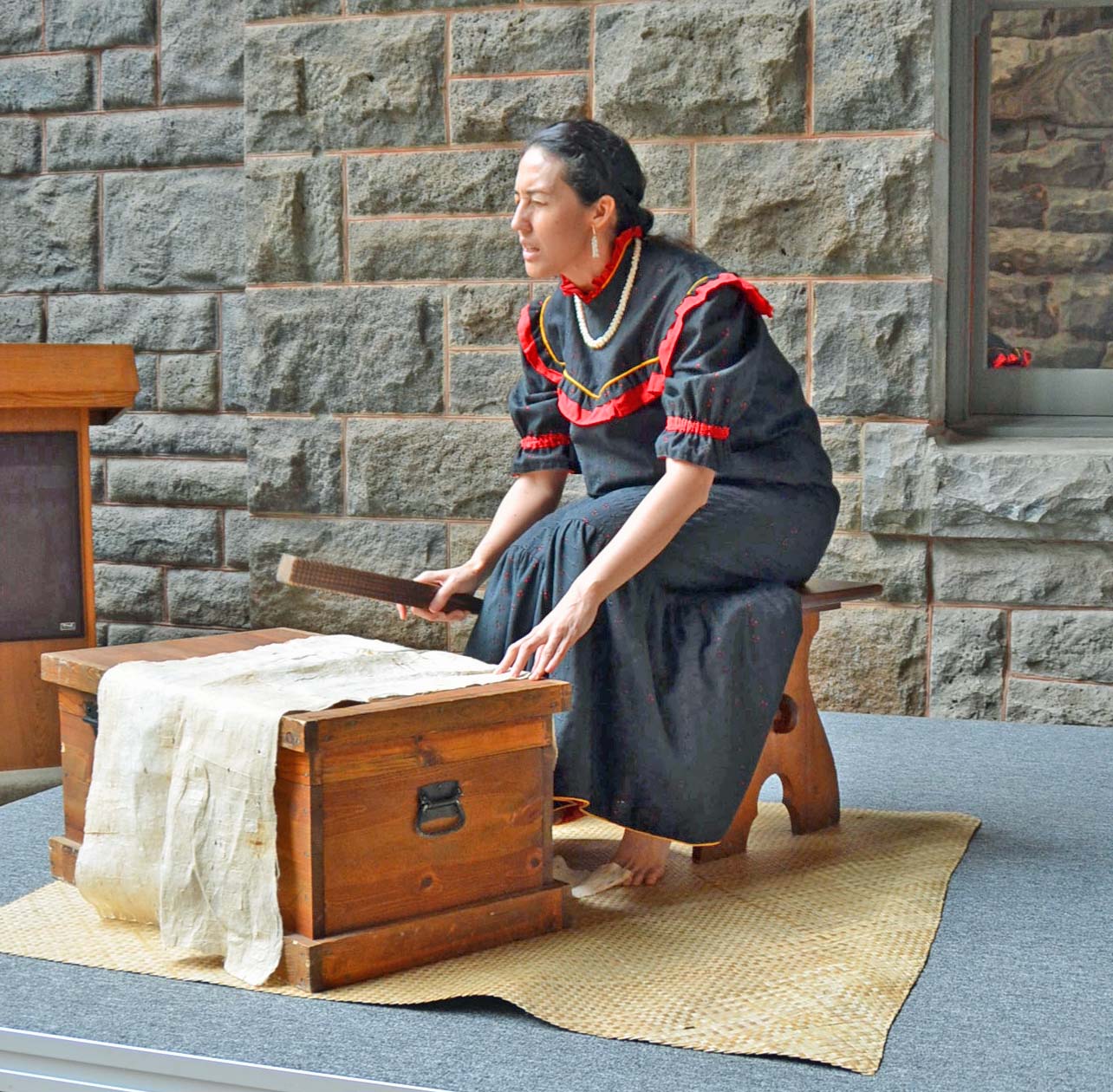
Our last stop in the museum was a small room that contained the portraits of all the Hawaiian monarchs from Kamehameha the Great to the last, Queen Lilioukalani (follow this link for the story of her overthrow by US Marines). Their stories were familiar to us from the pages of The Lost Kingdom and it was nice to be able to put a face to each.
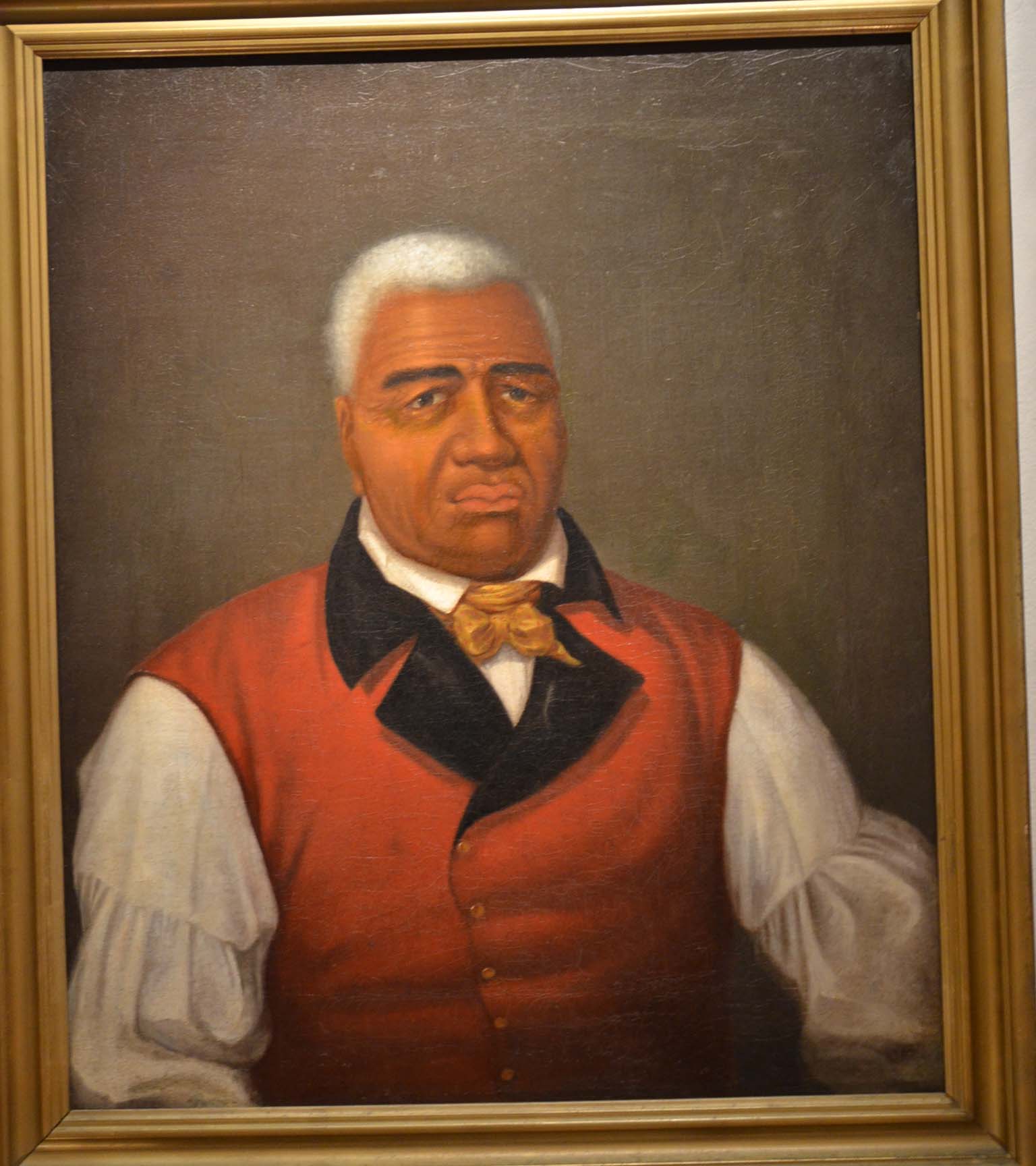
By the time we finished our three hours at the Bishop Museum the skies had cleared somewhat and we returned to the condo to give our feet a much needed rest. While Rob and Janet were understandably jet-lagged we had one more visit planned for that day.
You will not be in Hawaii long before you hear about Duke Kahanamoku, the original Big Kahuna. Duke was not only a legendary swimmer, winning multiple gold medals at numerous Olympics, but also considered to be perhaps the greatest surfer of all time. He is a Hawaiian legend and his statue at Waikiki is probably the most popular spot to get photographed in Honolulu. I had to get up at six just to get this photograph with no one else around (other than the bums who sleep on the park benches nearby).
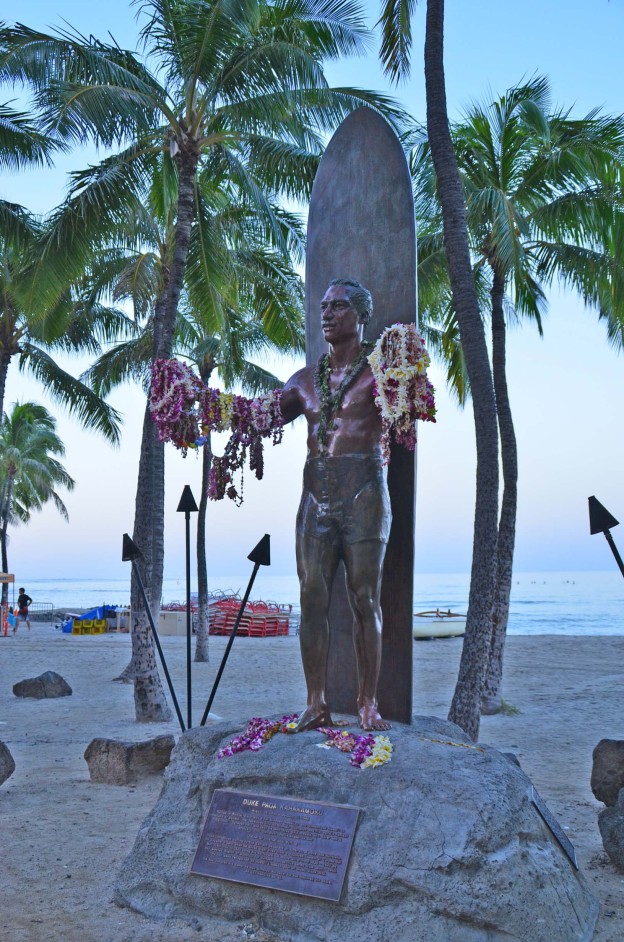
Duke was not averse to cashing in on his popularity and lent his name to a number of businesses of which the most successful are undoubtedly the series of Duke’s restaurants in Hawaii and California. The original of these is Duke’s at the Outrigger on Waikiki and it was here we were headed to see a living Hawaiian legend.

Henry Kapono is a pure Hawaiian who has a musical style that is impossible to describe other than possibly eclectic. He has been entertaining audiences on Hawaii and around the world for decades, singing songs from his dozens of albums. Ordinarily you wouldn’t expect a chance to get up close and personal with an artist of his stature, but if you go to Duke’s on Sunday at four Henry will almost certainly be there. He is a fixture; so much so that one of his albums is called Duke’s on Sunday and that is the name of his signature tune. Check it out on Spotify or You Tube.
We were running late and didn’t get to Duke’s until almost five. The weather continued to not cooperate and so instead of playing outside as he usually did the rain forced Henry inside into an incredibly small space where every square inch was jam packed with patrons eager to listen to his music. Despite the throngs we managed to get drinks and worm our way almost to the front of the crowd, prevented from going further by a number of drunken middle aged women who were dancing with wild abandon while their husbands pretended they with somebody else.
Henry did not disappoint although I’m sure it would have nicer to see him outside with the Waikiki rollers breaking behind him. Alison did manage to hold up the camera and get this shot of Henry as he ended his performance with Duke’s on Sunday. And it was a great way to end our day that took us from Pearl Harbor to the Bishop Museum and then to Duke’s.
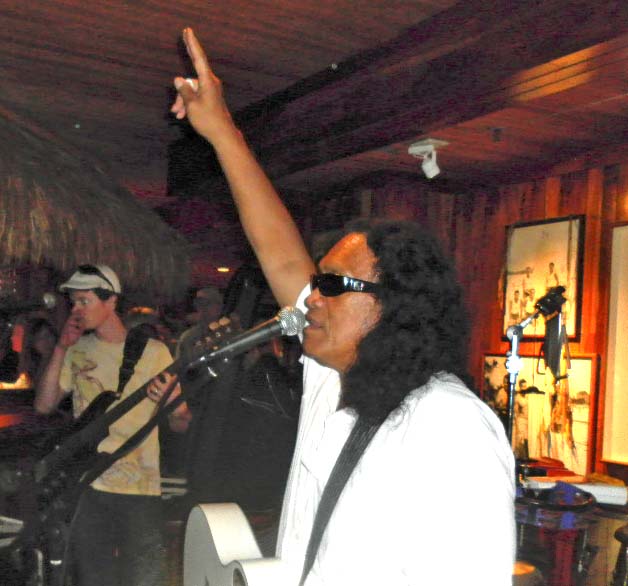
Join us tomorrow as we tour original Hawaii-Five-0 sites in search of Steve McGarrett and Wo Fat.

